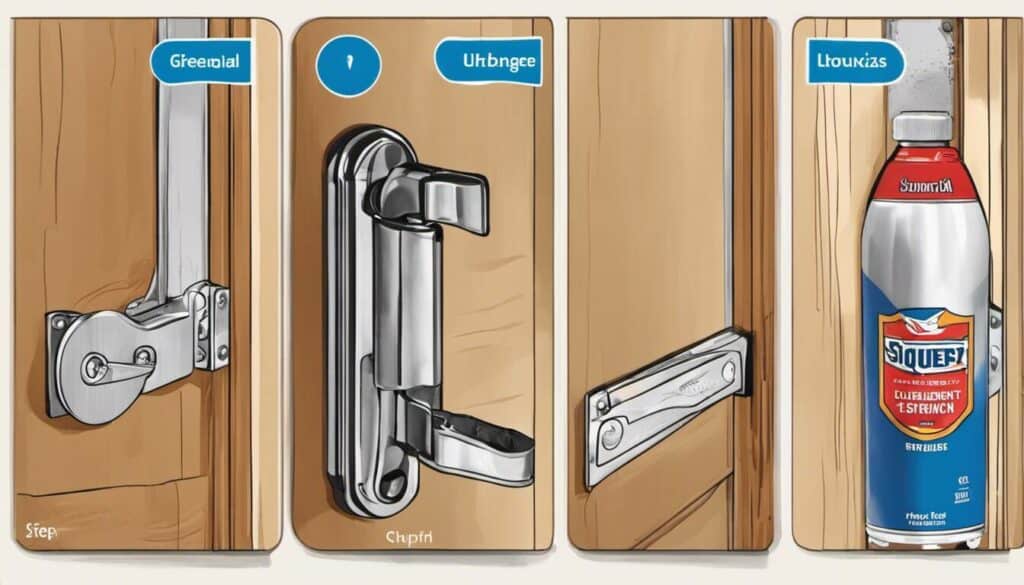Transforming my room from ordinary to extraordinary was a journey of attention to detail. Crown molding, I discovered, adds an elegant touch while increasing the value of my home. This realization came to me after completing a staircase transformation project that sparked my interest in home improvements. Admittedly, the idea of installation initially felt overwhelming, and there were moments when it truly was. However, I soon discovered that with the right approach, it didn’t have to be daunting at all. By fully immersing myself in the process and gaining insights into common pitfalls, I successfully sidestepped any mid-installation crises. Now, I’m excited to share my comprehensive step-by-step guide to crown molding installation, empowering you to navigate the process smoothly and avoid the same challenges I encountered along the way.
“The Crown Molding Debacle” is not a universally recognized term or event in the world of interior design. It may refer to a specific article, blog post, or discussion that focuses on the use and popularity of crown molding as a decorative design element in homes. The opinions and viewpoints presented in such discussions may vary widely and should be researched thoroughly before making any decisions about incorporating crown molding into your own home design.

“By taking careful measurements, making precise cuts, and securing them appropriately, you can ensure a professional looking installation of crown molding. This attention to detail is similar to what I learned when updating my ceiling light, where precision was key to achieving a polished look. In my experience, been haste has been the ruin of many a good carpenter; take your time, know your tools, and practice your cuts on scrap pieces before handling the actual material. Trust your skills, but also don’t hesitate to get a second pair of eyes to confirm your measurements – crown molding installation is not forgiving of errors.”
Balthazar Stengle, Certified Carpenter
Before You Begin
Embarking on a crown molding installation project requires careful preparation to ensure success and avoid potential pitfalls. Before diving in, take the time to gather the necessary tools and materials for the job. This can include items such as a miter saw, coping saw, measuring tape, adhesive, nails, and caulk. Having everything you need at your disposal will help streamline the process and prevent any unnecessary delays.
Furthermore, it’s crucial to thoroughly inspect your walls and ceiling before beginning the installation. Look out for any imperfections or irregularities that could affect how the crown molding fits. Surface preparation is essential to achieve a seamless and professional-looking result. If needed, patch and sand any spots that require attention prior to moving forward.
- When embarking on a crown molding installation project, it’s important to prepare carefully by gathering all necessary tools and materials, inspecting the walls and ceiling for imperfections, and properly preparing the surfaces before beginning the installation. These steps will help ensure a successful and professional-looking outcome.
DIY or Hire a Pro: Deciding Your Route
When it comes to installing crown molding, one of the key decisions you’ll need to make is whether to tackle the project as a DIY endeavor or hire a professional. This choice depends on various factors such as your skill level, available time, budget, and comfort level with using power tools.
For seasoned DIY enthusiasts with ample experience in home improvement projects, installing crown molding can be an exciting challenge that adds a personal touch to their space while saving on labor costs. This sentiment resonates with my experience of building a DIY pergola, which was both rewarding and cost-effective. It allows for creative freedom and can be a rewarding accomplishment.
On the other hand, there are instances where hiring a professional might be more beneficial. If you lack the necessary skills or tools required for precise cuts and installations, it’s worth considering bringing in an experienced contractor or carpenter who specializes in crown molding installations. This ensures an expert finish without the risk of costly mistakes or frustration.
Ultimately, weigh your abilities and comfort level against the complexity of the project. Assess whether you have the necessary time and dedication to commit to learning new skills if you choose the DIY route. Alternatively, consider the convenience and peace of mind that comes with entrusting the project to a skilled professional.
Measuring, Layout and Surface Preparation
Before diving into the installation process of crown molding, it is crucial to begin with accurate measurements, proper layout planning, and adequate surface preparation. Taking these steps will ensure a seamless and professional-looking installation.
To start, measure the length of each wall where the crown molding will be installed. Take note of any corners, angles, or obstacles that may require special attention during the installation process. It’s essential to measure multiple times to ensure precision before making any cuts. Double-checking eliminates the frustration of having to redo work due to measurement errors.
Once measurements are complete, the layout planning begins. This step involves deciding on the height and style of molding you desire for your space. It’s similar to mastering picture hanging, where careful planning ensures a visually appealing result. Consider the architectural details and overall design aesthetic of your home or room when selecting a crown molding design. Some individuals may opt for a simple and clean look, while others may prefer more intricate and ornate styles. Additionally, take into account the ceiling height, as taller ceilings can accommodate larger crown moldings.
Now that you have determined your measurements and layout, it’s time to prepare the surface. Ensure the walls are clean and free from any dust or debris that may interfere with the adhesion or stability of the crown molding. Patch any imperfections on the wall’s surface using spackle or putty and sand them down until smooth. A properly prepared surface will provide a solid foundation for secure crown molding installation.
Essential Tools and Materials for Crown Molding
To successfully install crown molding, having the right tools and materials at your disposal is essential. Here are some items you’ll need:
- Miter Saw: A miter saw is one of the most critical tools for cutting precise angles in crown molding. It allows for accurate 45-degree cuts required for corners and joints.
- Coping Saw: A coping saw is used to create intricate cuts on inside corners, allowing for a seamless fit between molding pieces. This tool is especially useful when dealing with uneven walls or ceilings.
- Measuring Tape: Accurate measurements are crucial in crown molding installation. Invest in a quality measuring tape to ensure precision during layout and cutting.
- Caulk Gun and Adhesive: These tools are used to secure the crown molding to the wall. A caulk gun helps apply adhesive evenly, ensuring a strong bond between the molding and surface.
- Nail Gun: A nail gun saves time and effort when attaching the crown molding to the wall. It provides a secure hold without the need for manual hammering.
- Painter’s Tape: Painter’s tape can be used to mark where cuts need to be made on the crown molding, minimizing errors and facilitating more accurate cuts.
- Safety Gear: Always prioritize safety when working with tools. Wear protective glasses, gloves, and a dust mask to safeguard yourself from any potential hazards.
These are just some of the essential tools and materials you may need for crown molding installation. Depending on your specific project and design choices, additional items such as sandpaper, wood filler, and a level may come in handy as well.
Armed with the necessary knowledge about preparing surfaces and gathering the right tools, we can now move forward to learn about the installation process itself – particularly how to handle corners with finesse.
Installation Process and Handling Corners
When it comes to crown molding installation, the process can be a bit intricate, especially when handling corners. However, with the right techniques and tools, you can achieve professional-looking results.
To start, proper measurement of the wall space where the crown molding will be installed is crucial. Taking accurate measurements ensures that you have the correct amount of molding and helps prevent unnecessary waste. Once you have your measurements, you can proceed to cut the molding accordingly.
Handling corners in crown molding installation requires precision and attention to detail. One common method is using mitered angles, where the two pieces of molding are cut at an angle and fit together neatly to form a seamless corner joint. This method works well for inside corners.
Another technique for handling corners is utilizing corner caps or blocks. Corner caps are pre-made decorative pieces that can be installed at the corners instead of cutting mitered angles. They provide an elegant and finished look without the need for precise angle cuts.
For instance, imagine you are installing crown molding in your living room, and you come across an inside corner where two walls meet at a 90-degree angle. To create a clean and seamless join, you would use a mitered angle by cutting each end of the respective molding piece at a 45-degree angle. By fitting these pieces together properly, you create a sharp corner without any visible gaps.
Choosing between mitered angles or using corner caps depends on various factors such as personal preference, skill level, and the complexity of the room’s architecture. Both methods can produce excellent results when executed correctly.
Now that we understand how to handle corners during crown molding installation let’s explore the importance of miter angles and corner caps in more detail.
Miter Angles and Corner Caps
A crucial aspect of crown molding installation lies in understanding miter angles and corner caps. Miter angles refer to the angles at which the two pieces of molding are cut to form a joint in the corner.
When cutting mitered angles, it’s essential to ensure accuracy and precision. One technique is to pretend the fence of your saw is the wall and hold the crown molding upside down against it as if it’s your wall. By cutting on a 45-degree angle in this position, you achieve precise cuts that allow for a seamless fit.
On the other hand, corner caps provide an alternative solution to achieving clean corners without dealing with mitered angles. These decorative elements come in various designs and can be easily installed at corners to cover any gaps or imperfections.
It’s important to note that both mitered angles and corner caps have their advantages and considerations. Mitered angles provide a traditional and seamless look but require skillful cutting and fitting. On the other hand, corner caps offer simplicity and ease of installation but may not provide the same level of customization.
Ultimately, choosing between miter angles and corner caps depends on factors like personal preference, skill level, desired style, and the specific requirements of your crown molding project.
Avoiding Common Crown Molding Mistakes
Proper installation of crown molding can elevate the aesthetic appeal of any room, adding a touch of elegance and sophistication. However, it is essential to be aware of common mistakes that can occur during the installation process to ensure a flawless outcome.
One common mistake to avoid is improper measuring. Accurate measurements are crucial for achieving precise cuts and seamless joints. It’s important to measure each wall individually and account for any inconsistencies or irregularities. Take into consideration factors like sloping ceilings or uneven walls, as these can significantly impact the final result.
Another mistake to steer clear of is neglecting to cope corners instead of mitering them. While mitering may seem like a quicker and easier option, coping provides a more accurate fit and helps conceal imperfections in walls or ceilings. By using the coping technique, the crown molding will seamlessly wrap around the corner, creating a seamless transition.
Failure to properly secure the crown molding is another common pitfall. Insufficient nailing can result in gapping or sagging over time. It is recommended to use adhesive along with nails for added strength and stability. Additionally, ensure proper alignment by using a level during installation.
Let’s imagine you’re installing crown molding in a room with an intricate design pattern on the ceiling. Failing to align the molding properly could disrupt the pattern and diminish the overall aesthetic appeal of the space.
Lastly, overlooking the importance of proper paint or finish preparation can lead to subpar results. I learned this lesson the hard way during my fireplace facelift project, where proper preparation made all the difference in the final appearance. Before installation, ensure that all pieces of molding are sanded, primed, and painted or stained appropriately. This ensures a finished look without any visible imperfections or blemishes.
By avoiding these common mistakes, you can ensure that your crown molding installation goes smoothly and achieves outstanding results that enhance the beauty of your home.





One of my early attempts at crown molding ended up looking like a beaver had chomped on it, and trust me when I say that was not the “rustic” touch I was aiming for!
I too had a disastrous first go at crown molding, Gravewalker. But after multiple trials and lots of sandpaper later, I turned it into an art form—don’t let the setbacks discourage you!
Trust me Joshua, mastering the art of crown molding takes time and lots of patience. Remember it’s like painting—a few strokes won’t turn you into Monet, but persistence certainly will get you closer!
You’re absolutely right Kalani, I’d like to add that using quality tools paired with unwavering patience often results in successful molding installations.
Certainly agree with you Allister, however, it’s important to remember that even the most expensive tools can’t replace the right technique. During my second installation, I leant heavily on a laser level, which significantly improved the precision of my molding placement.